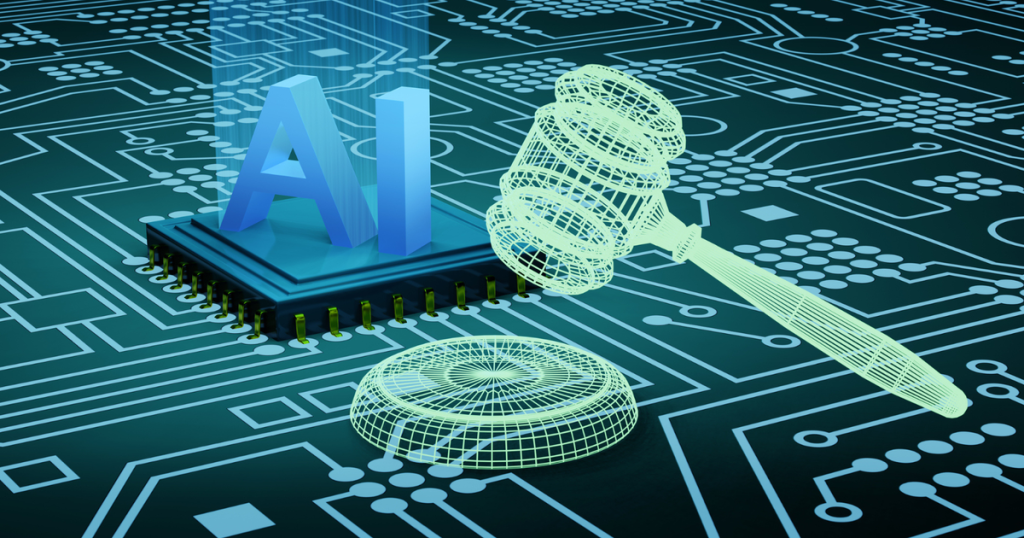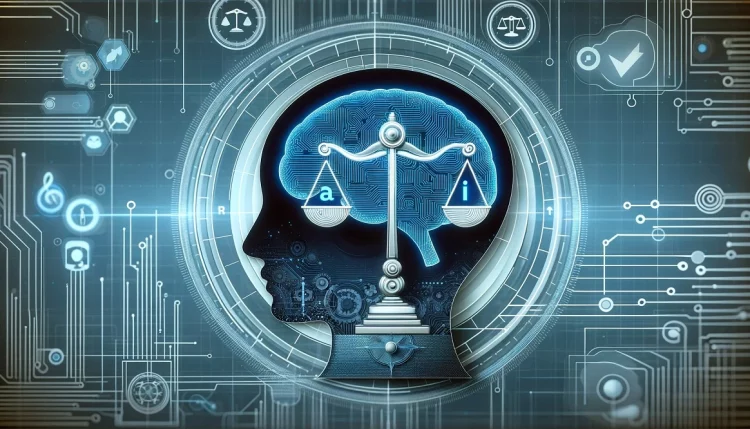Introduction: The Growing Importance of Ethical Robotics
As robots become more integrated into our daily lives and workspaces, ensuring that their actions align with human ethical standards has become one of the most important challenges in robotics and artificial intelligence (AI). Robots, ranging from autonomous vehicles and industrial machines to healthcare assistants and personal companions, have increasingly complex decision-making systems that can influence the lives of individuals and society at large.
The need to ensure that robots behave ethically is not only a matter of technical design but also a philosophical and sociological concern. While technology advances rapidly, the ethical frameworks that guide the behavior of these machines are still developing. Autonomous robots, capable of making their own decisions, need to be designed with moral and ethical guidelines that reflect human values and societal norms.
This article delves into the concept of ethical robotics, discussing the moral implications of robot behavior, the challenges of programming ethical decision-making into machines, and the future of human-robot interaction. We will explore the role of ethics in robot design, the potential consequences of unethical behavior, and how AI and robotics can be steered toward a future that benefits humanity as a whole.
1. The Ethical Dilemmas of Autonomous Robots
As robots gain autonomy, they are increasingly tasked with making decisions without human intervention. Whether it’s an autonomous vehicle deciding how to respond to an emergency situation or a healthcare robot diagnosing a patient, these decisions can have profound consequences. The question of how to ensure that robots make morally sound decisions, in line with human ethical principles, is a complex one.
1.1. Moral and Ethical Decision-Making in Robots
In the past, robots were primarily controlled through pre-programmed instructions and could only carry out tasks in a fixed manner. Today’s autonomous robots, however, must navigate dynamic environments and make real-time decisions. This opens up a new realm of ethical dilemmas, such as:
- Autonomous vehicles and the “Trolley Problem”: Self-driving cars are often used as a case study to explore ethical decision-making. If a car must choose between two harmful outcomes—hitting a pedestrian or swerving into another vehicle—how should it decide? While there is no consensus on the “right” answer, the challenge lies in programming machines to make decisions that reflect the values of their creators and society.
- Healthcare robots and patient privacy: Robots in the healthcare sector must make sensitive decisions related to diagnosis, treatment, and patient data privacy. Ethical considerations such as patient autonomy and informed consent must be embedded in the design of these systems.
- Military robots and the use of force: Military robots, particularly drones and autonomous weapons systems, present some of the most controversial ethical challenges. Should robots have the authority to use force, and under what circumstances?
These examples underscore the need for ethical frameworks that guide robot decision-making. Creating rules for robots to follow can be difficult, as the definition of “ethical behavior” often varies across cultures and contexts.
1.2. The Risks of Unethical Robot Behavior
Without clear ethical guidelines, robots can make decisions that conflict with human values, which could lead to harm or undesirable outcomes. Some risks include:
- Bias and Discrimination: If a robot’s decision-making algorithms are not properly designed, they could unintentionally perpetuate existing biases. For instance, facial recognition systems have been shown to exhibit racial and gender bias, potentially leading to discriminatory practices.
- Autonomy vs. Accountability: When robots operate autonomously, it becomes unclear who is responsible for their actions. If a robot makes a decision that results in harm, should the responsibility lie with the manufacturer, the programmer, or the user?
- Privacy Violations: With the ability to collect vast amounts of data, robots could infringe upon personal privacy if not properly regulated. For example, robots in healthcare, retail, or home environments may gather sensitive personal data without the explicit consent of individuals, leading to potential misuse.
The potential consequences of unethical behavior highlight the need for carefully crafted ethical guidelines and regulations that ensure robot behavior aligns with human values and societal expectations.
2. Defining Ethical Norms for Robots
Creating ethical robots requires that we first define what “ethical” means in the context of autonomous machines. Several philosophical and ethical frameworks are being explored to help guide robot behavior.
2.1. Utilitarianism: The Greatest Good for the Greatest Number
One common approach to ethical decision-making in robotics is utilitarianism, the principle of maximizing overall happiness or well-being. When applied to robots, this could mean programming them to make decisions that maximize benefits to society, even if it involves making difficult trade-offs.
For example, an autonomous vehicle might be programmed to prioritize saving the lives of the most people in a given situation. While this approach is simple and widely known, it is also subject to criticism due to the difficulty in quantifying and balancing the value of human lives.
2.2. Deontological Ethics: Duty and Rights
Another approach is deontological ethics, which emphasizes adherence to rules or duties, regardless of the consequences. Robots following this framework would prioritize actions that align with established ethical norms, such as respecting human rights or never causing harm, even if doing so might result in an undesirable outcome.
For instance, a healthcare robot could be designed with strict rules regarding patient confidentiality and informed consent, prioritizing these duties above all else, even if doing so conflicts with other goals, such as cost-effectiveness or efficiency.
2.3. Virtue Ethics: Fostering Good Character
Virtue ethics, which emphasizes cultivating good moral character, suggests that robots should emulate virtuous human qualities such as honesty, compassion, and justice. This approach focuses on how robots develop and evolve in their behavior over time, rather than adhering strictly to rules or maximizing societal good.
In the context of a robot assistant, for example, this might mean that the robot learns to develop empathy and understanding as it interacts with humans, making it better equipped to provide emotional support or recognize when a user is in distress.
2.4. Ethics of Care: Relationship and Context
The ethics of care emphasizes the importance of relationships and the specific context in which decisions are made. Robots designed with this ethical framework would consider the needs of individuals and the context of their interactions, rather than applying universal rules to all situations.
For example, a robot working in a home care setting might be programmed to understand the unique needs of elderly individuals, such as offering companionship or assisting with specific physical tasks, while considering the emotional and social dynamics of the care environment.

3. Integrating Ethics into Robot Design: Strategies and Approaches
While philosophical principles provide a foundation for ethical behavior, integrating these ideas into robot design and programming is a practical challenge. Several strategies can be used to ensure that robots behave ethically.
3.1. Transparency and Accountability
One crucial aspect of ethical robot design is ensuring transparency in how robots make decisions. This includes providing clear explanations of the decision-making processes used by autonomous systems. Transparency not only fosters trust but also allows for accountability when things go wrong.
- Explainable AI (XAI): The development of explainable AI systems allows humans to understand how and why a robot made a specific decision. This approach could be essential in scenarios like autonomous vehicles, where explaining the reasoning behind a decision can help determine accountability in case of an accident.
3.2. Ethical Testing and Simulation
Before deployment, robots must undergo thorough ethical testing to ensure their behavior aligns with human values. This includes running simulations of various scenarios and assessing how robots respond in different contexts. Ethical testing can help identify potential problems in decision-making algorithms before they are introduced into real-world environments.
- Simulation Environments: Roboticists are developing virtual environments in which robots can “learn” to make ethical decisions. These environments allow robots to simulate real-world scenarios, such as emergency situations or complex social interactions, without the risk of harm.
3.3. Continuous Monitoring and Updates
Once deployed, robots should be continuously monitored to ensure that their behavior remains ethical and in line with societal standards. This monitoring could involve gathering feedback from human users, observing the robot’s actions, and updating its decision-making algorithms as needed.
- Ethical Audits: Routine ethical audits can be performed to review the robot’s actions and assess whether it is meeting the intended ethical standards. This may include examining any bias, errors, or unintended harm that could arise during the robot’s operation.
3.4. Collaboration Between Stakeholders
The ethical design of robots requires input from a variety of stakeholders, including ethicists, technologists, policymakers, and the general public. Collaboration between these groups will help ensure that robots are designed to meet societal norms and address concerns related to fairness, transparency, and accountability.
4. The Role of Regulation in Ethical Robotics
To ensure that robots behave ethically, governments and regulatory bodies must step in to create standards and guidelines for ethical robot design and behavior. These regulations could establish broad ethical principles while also addressing specific concerns in areas like healthcare, transportation, and defense.
4.1. International Standards
International organizations, such as the IEEE and ISO, are already working on creating global standards for robotics and AI ethics. These standards could include protocols for robot decision-making, transparency in AI systems, and ensuring that robots do not discriminate or cause harm.
4.2. National and Local Legislation
Governments will also play a crucial role in shaping the ethical landscape of robotics. By enacting laws related to the use of robots, data privacy, and AI ethics, governments can ensure that robots act in a way that aligns with societal values. These regulations should evolve as technology advances and new ethical dilemmas emerge.
5. Conclusion: The Future of Ethical Robotics
The ethical challenges surrounding robot behavior are complex and multifaceted. However, with careful design, ethical frameworks, and continuous monitoring, it is possible to create robots that act in ways that align with human values and moral principles. As AI and robotics continue to evolve, we must remain vigilant in ensuring that these technologies serve humanity in a positive and ethical way.
By promoting collaboration among ethicists, engineers, regulators, and the public, we can build robots that not only perform tasks efficiently but also respect the fundamental rights and ethical norms that define a just and moral society. The future of robotics depends on our ability to guide the behavior of these machines and ensure that they contribute to a better world for all.







































